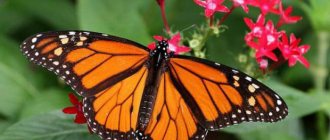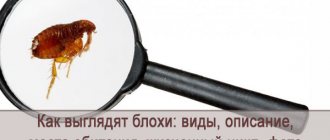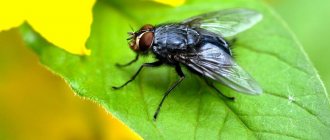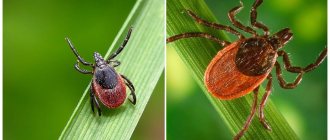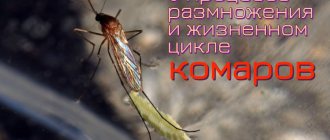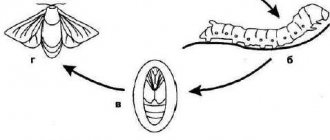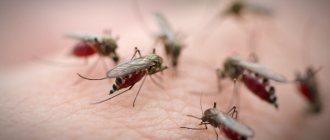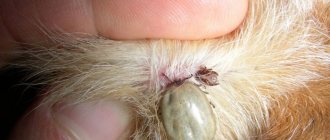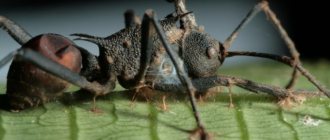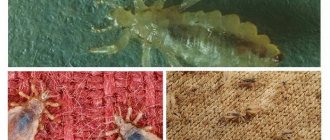29.12.2016
Ascariasis is a helminthiasis caused by parasites in the form of roundworms. The development of roundworm and its reproduction occurs in the human intestine. Both adults and children are susceptible to the disease. If this parasitic infection is not treated, the worms can reach a length of about 40 cm. They move freely through the intestines, holding on to its walls. For this reason, they are not always passed along with feces, which complicates the diagnostic process. What is a parasite? How long do roundworms live? What is the development cycle of human roundworm? More on all this below.
What is roundworm
Loading …
Description of roundworm
Roundworms belong to the class of roundworms. Their body has pointed ends. The difference between a male and a female lies in the size and shape of the body. Males have a curved body, the length of which, as a rule, does not exceed 20-25 cm. The female can grow up to 40 cm in length.
The number of eggs that the human roundworm lays, settling in the small intestine, is more than 200 pieces. Most of them are fertilized.
The larva from a mature egg matures within 30 days. If a mature larva enters the human body orally, an invasion will occur.
Body cavity
The body of the roundworm has an oblong shape, tapering at both ends. In cross section it is round, and in the cavity there is a colorless liquid.
As described above, the internal cavity of the parasite’s body is primary. This means that the internal organs are not separated from the body wall by an additional layer of epithelium. A special feature is the presence of a closed space in the body of the worm, in which the digestive and reproductive organs are located.
The functions of the cover include:
- Support. Functioning as an exoskeleton, it forms a shell for internal organs and fluid.
- Transporting vital substances from the digestive system to all others.
- Movement of waste products into the excretory organs.
Thanks to the external aquatic skeleton, the body of the roundworm is protected from the effects of the human body (digestion with the help of gastrointestinal enzymes). This skeleton is involved in metabolism and performs the task of the circulatory system.
Features of the development of roundworm
The human roundworm development cycle is a step-by-step process that continues over several months.
The life cycle of roundworm occurs in two stages:
- migration;
- intestinal.
Before the migration cycle of roundworm development, the parasite egg must penetrate the soil. If the conditions for its further maturation are favorable, a larva develops inside. Human infection occurs after an egg with a larva comes into contact with poorly washed food or contaminated water. Penetrating into the intestines, it goes through a migratory stage of development.
Roundworm infection
This phase involves the period of development of the worm from molting (shedding its shell) to a young individual. The worm migrates through the host's organs, after which it again settles in the intestine.
The roundworm life cycle diagram is as follows:
- Development of eggs in soil.
- Contamination of food and water.
- Infection of humans by oral route.
- Movement of larvae throughout human organs.
- Entering the oral cavity with sputum secreted by coughing.
- Return to the small intestine for the development of the human roundworm into an individual ready for sexual reproduction and further life in the body.
Development in soil
Many people believe that the environment has a detrimental effect on roundworms. However, these parasites are not only able to survive in such conditions, but also fully develop. The process of helminth development in the ground begins in late spring or early autumn. In winter, due to exposure to low temperatures, development stops until mid-March.
Young worm eggs begin to develop in early March. However, due to climatic conditions, the dates may be postponed by 10-15 days.
Within two months, larvae begin to form in the eggs. The duration of the transition of helminths to the larval stage also depends on the characteristics of the climate and soil. Parasites develop most quickly in warm and sunny weather in soils that are well saturated with oxygen and moisture.
It is quite difficult to determine unambiguously how many helminth eggs can live in the soil. However, most scientists say that under optimal conditions they live in the ground for about two years. In arid regions with high temperatures, the lifespan of parasites is halved. While in the ground, helminth eggs can land on vegetable fruits. Therefore, many advise, before planting plants, to spray the area with hot water to clear the soil of helminths.
Stage-by-stage development of the parasite
Entry of eggs into the human body
The larva is freed from its protective shell. Having settled in the intestines, the worm attaches to its mucosa.
Penetration of larvae into the bloodstream
Having made holes in the small intestine, the parasite makes its way through them into the bloodstream. The larva secretes a substance that can dissolve the walls of blood vessels and easily enter the bloodstream.
Moving through organs
Once the parasite enters the circulatory system, it spreads throughout the body and affects its organs.
The last location of the larva during the migration period is the larynx. At this stage, a person develops a cough, which is due to an irritating effect on the larynx.
During a cough, the larva again makes its way into the pharynx and migrates to the intestines. There the adult parasite develops in the host’s body.
The incubation period for roundworm takes an average of three months.
Intestinal stage
The stay of the roundworm in the intestines is the last stage of the formation of the worm larva.
The young worm feeds on the host's blood serum to support its vital functions. Over time, it takes on red blood cells. During the growth of roundworm in the human body, it experiences a greater need for oxygen. Even during the period of movement, its lack forces the larva to move to the lungs. The habitat of roundworms can be identified by their color. Viable worms are reddish in color, while dead ones are white.
During the passage of all stages of the roundworm, the life cycle involves its further presence in the body and movement through the organs.
People with ascariasis may suffer from jaundice, pneumonia, pancreatitis, and bleeding in the gastrointestinal tract. Adult worms can live in the human body for about a year.
Epithelial cover and muscles
The epithelial cells of the human roundworm form the outer multilayered cuticle, also called the hypodermis. It consists of ten layers. It is the hypodermis that produces a substance that prevents the digestion of helminths by intestinal enzymes. On a cross-section of the helminth, it looks like a thin-walled shell covering it entirely.
The peculiarity of the hypodermis is that, despite its strength, it is very flexible. This allows the roundworm to actively move. There are four ridges on the cuticle. They are located on the sides, on the back and peritoneum. The ridges contain excretory organs that have the shape of canals. Each of them is a depression separating the hypodermis and the muscular frame.
Muscle consists of longitudinal fibers. These fibers, together with the epithelium, make up the lining of the body cavity of the roundworm and form the body wall.
This feature of the integument facilitates the active movement of parasites, but the muscular frame, which differs from the frames of other roundworms, does not allow them to move in a straight line.
Routes of infection
Ascariasis is a disease of “dirty hands”. Neglect of personal hygiene rules significantly increases the risk of infection with roundworms. The eggs of these parasites remain in the soil for a long period.
Ascariasis - a disease of “dirty hands”
The most common causes of infection:
- drinking water from questionable reservoirs;
- inadequate cleansing of fruits and vegetables;
- ingestion of certain foods that are insufficiently thermally processed;
- working in unsanitary conditions;
- failure to comply with hygiene rules.
- children's games in the sandbox.
The risk group includes those who are fond of gardening and are constantly in contact with the soil. To prevent parasitic infection, you need to wash your hands as often as possible.
Digestion
You may be interested in: Zirconium bracelet: medicinal properties, benefits and harms, reviews
The digestive system of the human roundworm consists of a hollow tube that forms an intestine with four sections. Two of them are formed from ectoderm and two are of endodermal origin.
The intestine is a closed and tortuous cavity, which is located in the central part and passes through the entire body of the helminth. All nutrients are absorbed in the midgut.
Such a simple anatomy of the digestive system of the human roundworm is due to the fact that the parasite is constantly surrounded by food mass processed by the human intestine. This greatly simplifies the feeding mechanism for him.
The process of absorption of food occurs through the opening of the mouth, surrounded by the so-called lips.
Symptoms
The most common sign of ascariasis is the appearance of allergic reactions. The patient may experience general intoxication, with fever and muscle pain.
While in the human body, helminths attack his lungs, so small hemorrhages may be visible on fluorographic images.
General symptoms of ascariasis:
- abdominal pain;
- sudden weight loss;
- gastrointestinal problems;
- nausea;
- vomit;
- pale skin;
- respiratory tract diseases;
- general malaise;
- irritability;
- insomnia;
- allergic skin rash.
Diagnosis of ascariasis
The first stage of diagnosis is collecting information about the symptoms that bother the patient. Next, using microscopy, the presence of helminth eggs in the feces is diagnosed. In photographs of human roundworms in feces, the eggs look approximately the same as they do in the laboratory under a microscope.
The reasons why eggs were not found in the stool, but helminth disease is possible:
- The person was infected quite recently, and the female had not yet had time to lay eggs;
- ascariasis in a patient in an extraintestinal form;
- eggs are absent only in stool intended for analysis.
In such cases, other diagnostic methods are prescribed - blood tests, tomography, ultrasound, radiography.
Treatment
For deworming, the pharmaceutical market offers many appropriate drugs. Before starting therapy, the patient needs to take medications that will relieve the symptoms of intoxication. If ascariasis occurs in an unadvanced form, a short course of treatment will be required using drugs such as Albendazole, Pyrantel, Levamisole, etc. In severe forms, they will require longer use. After completion of treatment, the patient is scheduled for a re-examination.
Before starting therapy, the patient needs to take medication
Nervous system
Its structure is also primitive. The nervous system of the parasite consists of one ganglion node represented by a peripharyngeal ring. It is located in the head part of the helminth. Dorsal and abdominal nerve bundles extend from it along the body. Their functions include organizing muscular control during movement and the presence of sensitivity.
Roundworms have practically no receptors. There are only papillomas, which are tactile bumps. They are located near the oral cavity.
Parasites also have no other sensitive formations. They have atrophied because the digestive environment of the human intestine does not contain any physical irritants.
Prevention
To prevent parasitic infection, it is important to follow certain recommendations:
- wash and scald fruits and vegetables with boiling water;
- wash your hands before eating and after visiting public places;
- monitor the cleanliness of the hands of a child who plays in the sandbox and comes into contact with domestic and street pets;
- use antibacterial gels if it is not possible to wash your hands with soap.
- subject meat and fish to full heat treatment.
Loading …
Treatment and prevention of human roundworm infestation
Treatment of any helminthic infestation should be carried out only in combination with other means that prepare the gastrointestinal tract for deworming. Therefore, it is necessary to start with a diet that cleanses the intestines. It is necessary to completely limit sweet and starchy foods during treatment. It is necessary to eat cereals and cooked vegetables, which stimulate intestinal motility. After this, it is advisable to conduct a course of carrying therapy.
To do this, it is necessary to conduct a single course with the use of laxatives. It is better to take herbal preparations with a carrying effect. These include “Senadexin” - a portable remedy based on the leaves of senna - a plant with a laxative effect. After this course of cleansing therapy, they move on to treating the helminthic infestation itself. Antihelminthic drugs are used.
- Pyrantel is an anthelmintic drug that acts against human roundworm by depolarizing the membranes of muscle cells of worms, which contributes to the death of mature forms of roundworm. The drug is available in the form of tablets and suspension. The dosage of the drug for children is 250 milligrams up to six years old, and over six years old – 500 milligrams. For adults in the treatment of roundworms, a dose of one gram is recommended, that is, four tablets per dose. Possible side effects from the digestive system in the form of diarrhea, abdominal pain, nausea, as well as changes in nervous activity in the form of dizziness, drowsiness, increased excitability, paresthesia.
- Vormil is an anthelmintic drug whose main active ingredient is albendazole. The mechanism of action of the drug is to disrupt the metabolism of roundworm cells. The advantage of this remedy is that albendazole acts both on the intestinal form, that is, on the adult, and on larvae and eggs. The drug is available in the form of chewable tablets and suspension. The dosage of the drug is one tablet at a dose of 400 milligrams once a day, the course of treatment is three days. Possible side effects of the drug in the form of drowsiness, dizziness, decreased performance, as well as dyspeptic symptoms.
Release form
Prevention of infection with human roundworm can be specific and nonspecific. Specific prevention is the use of anthelmintic drugs that have activity against roundworms for prophylactic purposes. To do this, it is necessary to take anthelmintic drugs twice a year; for children, half the therapeutic doses can be recommended. You can use any anthelmintic drugs - mebendazole, albendazole, Pyrantel.
Nonspecific prophylaxis should be used by all people, especially children should be monitored. Before eating, be sure to wash your hands; fruits and vegetables should also be washed before eating. As for water and food, it is better for children not to drink water raw, but to allow food to undergo sufficient heat treatment. For good digestion and reducing the possibility of roundworm infestation, proper nutrition is necessary, which increases local immunity and the anthelmintic capabilities of the intestines.
Is it possible to become infected with worms from cats?
When interacting with soil, sand, grass and other animals, cats can become carriers of human roundworm eggs. They will pass to a person through direct contact with the cat. A person, having played with a cat or simply stroked it, has no idea that the pet has “rewarded” him with parasite eggs.
Prevention is to wash your hands after every contact with cats. But often people forget about the importance of this procedure. Therefore, infection with helminths from cats occurs quite often.
Respiratory system
Worms live in an anaerobic environment. Where there is no free oxygen. Therefore, they do not need the respiratory organs present in individuals that are more developed. Their lack of a respiratory system is the result of a natural adaptation, since there is no air in the human intestines.
Metabolic processes occur due to cellular respiration. It is carried out as a result of glycolysis in the cell cytoplasm. This type of cellular respiration, in which there is no oxygen, is used by anaerobic organisms.
Possible complications
Roundworms are dangerous for children and adults. Complications of this disease include intestinal obstruction, peritonitis, ascariasis cirrhosis and liver abscesses, appendicitis, lesions of the pancreas, trachea and pharynx.
Helminths in children, due to their anatomical features, can cause intestinal obstruction associated with blockage of the intestinal lumen by parasites curled into a ball.
Mature helminths are able to penetrate the bile ducts and pancreatic ducts. They are especially often found in the bile ducts and their branches; they are also found inside the liver.
When a bacterial infection occurs, an inflammatory process occurs, leading to cirrhosis and liver abscesses. The appearance of worms in the hepatic ducts is accompanied by unbearable pain, but without jaundice.
Jaundice occurs when deep bile ducts are blocked. The helminth can pierce the liver tissue, fall into the abdominal cavity and introduce an infection into it with the subsequent development of peritonitis.
Parasites penetrate not only into the bile ducts, but also into the pancreatic ducts, the blockage of the lumen of which causes acute pancreatitis. Roundworms in the area of ulceration of the mucous membranes can break through the thinned wall of the organ with subsequent bleeding.
In surgery, cases are described when roundworms crawled through postoperative sutures and entered the abdominal cavity.
Ascariasis causes a pathological course of pregnancy, accompanied by nausea and vomiting.
Roundworms can penetrate the urinary tract and vagina. Ascariasis leads to vitamin deficiency, a decrease in “useful” intestinal microflora and the body’s immune defense.

